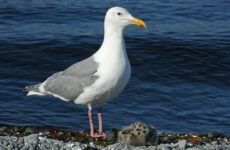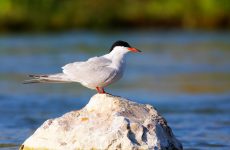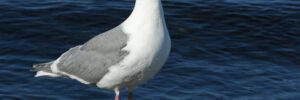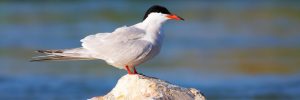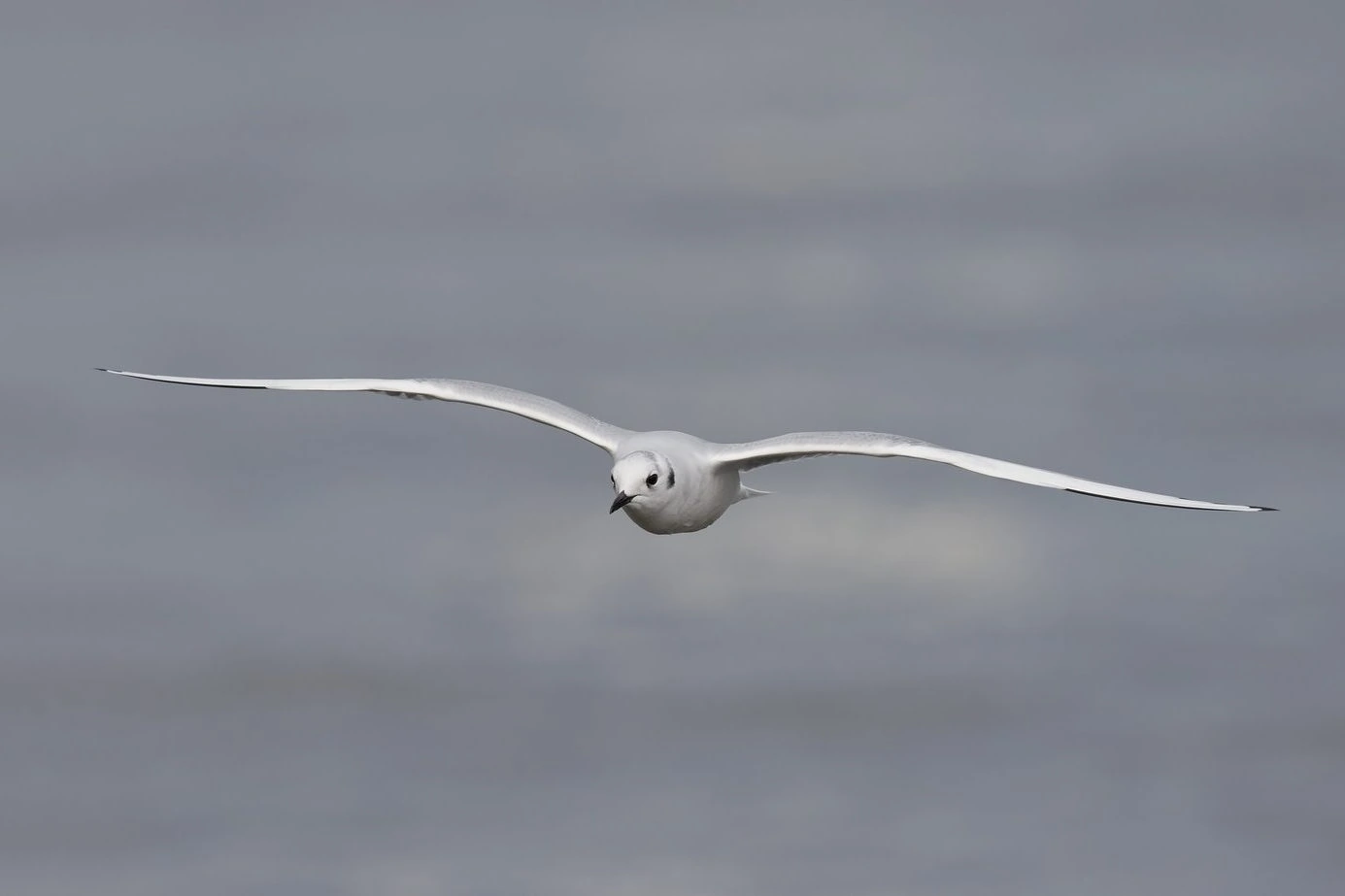
Bonaparte’s Gulls are one of the smallest species of gulls recognizable by their black hoods during the breeding season.
Their thin, short bills are also black and their black eyes have white eye crescents. Their bodies are white and their backs are gray. They have red-orange legs and feet. Their tails are white with a black tip.
Non-breeding adult Bonaparte’s Gulls do not have the black hood. Instead, they have a black smudge behind their eyes.
First winter Bonaparte’s Gulls are like non-breeding adults except that they have a black bar across their wings. Juveniles are a combination of brown and gray initally.
- Chroicocephalus philadelphia
- Length: 12 – 14 in (30 – 36 cm)
- Weight: 8.11 oz (230 g)
- Wingspan: 33 – 36 in (84 – 91 cm)
Range
Bonaparte’s Gulls breed mainly in Canada and spend winter in the eastern United States and the Pacific Coast.
Habitat And Diet
You can find Bonaparte’s Gulls in boreal forests near lakes and marshes during the breeding season. They prefer open areas with trees near ponds, islands, bogs, and marshes. In the winter, you can find them along the coasts and practically any water environment where water is not frozen.
Bonaparte’s Gulls are opportunistic feeders that grab small fish, krill, insect larvae, marine worms, small crabs, and small snails whenever and wherever they can. During the summer, they eat flying ants, termites, bees, and other aerial insects that abound in the forests.
Bonaparte’s Gull Calls:
Nests
Nests of Bonaparte’s Gulls are made of twigs, bark, and branches, lined with lichen and moss, and are located in conifer trees as high as 40 feet. Some nests are built near the ground, on top of rushes, and made of plant vegetation. The female lays two to three eggs and both parents incubate them for about three weeks.
Fun Fact:
Bonaparte’s Gulls are affectionately known as ‘Bonies’ by bird watchers.

